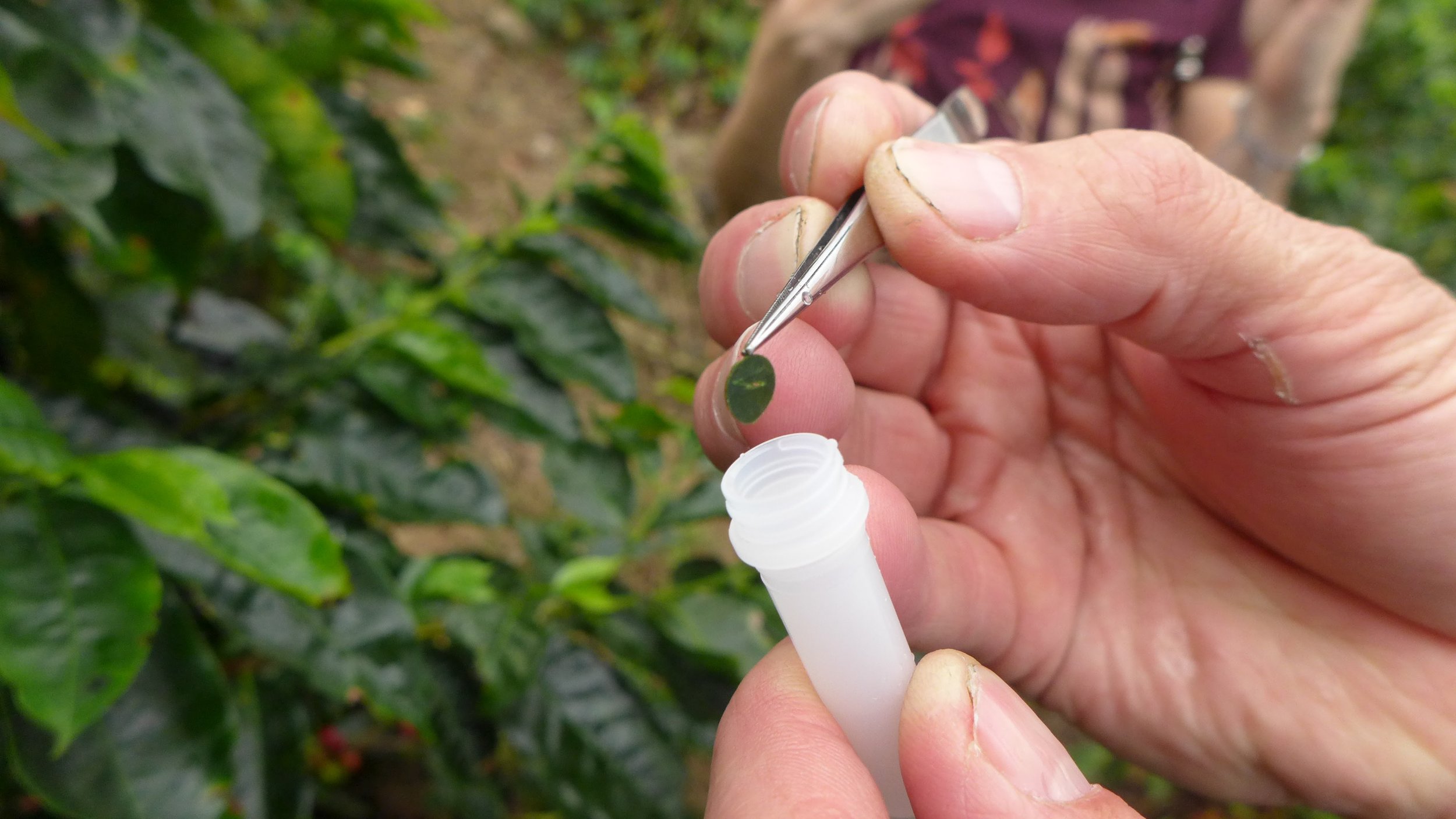
DCF Magazine.
Our reference articles offer free access to a wide range of current knowledge related to digitalization in the coffee industry.
Three profiling software systems to manage roasting data
As roasting businesses expand, they must optimize their operations. Streamlined processes, scalable technology, and talent development are pivotal in ensuring business growth without sacrificing quality or exhausting resources. One of the key areas that draw most of a roasting business owner’s time is roasting itself, especially when you have started with a small-capacity machine. Suddenly you can find yourself roasting 8 hours a day, which leaves no time for other activities like marketing, sales, and customer service. In tackling the automation part of this challenge, here are three software systems that roasting businesses may find useful.
Genetic traceability: A tool for enhancing sustainable coffee production
Genotyping is an important tool for improving traits in plants, as it helps scientists identify and validate links between a plant’s DNA to certain characteristics. This is particularly relevant in field trials and nurseries, as it allows for the selection of seedlings with specific attributes, such as resistance to diseases. While this type of technology has become increasingly common in many forms of agriculture, the coffee sector has fallen behind. One of the institutions working on developing genetic traceability tools for coffee is World Coffee Research (WCR), which seeks to bring higher quality plants to coffee farmers around the world and ensure the long-term sustainability of the sector.
Redefining direct global trading with digital end-to-end platforms
Buying coffee internationally is fraught with complexities, risks and inefficiencies at every stage of the supply chain. Meanwhile, the growth of e-commerce has exponentially increased retail businesses' reach via marketplaces that facilitate business from the first point of sale to its final delivery. These same digital tools can greatly enhance the participation in international coffee trading at all levels of the coffee supply chain by connecting everyone in one centralized place. New York-based value chain management platform CropConex has entered this space by launching its own digital end-to-end marketplace.
Seven deforestation-monitoring tools that can support compliance with the EUDR
Following the recent approval of the European Union Deforestation-Free Products Regulation (EUDR) by the European Council on May 19th, the coffee industry is now faced with the imperative of adopting digital tools to ensure compliance with this new regulatory framework. In this article, we present a small selection of examples among the wide range of tools catering to diverse user needs and operating contexts to demonstrate the possibilities in this context.
White-label apps: Making technology accessible for independent coffee businesses
Nowadays, customers look more than ever for convenience, speed and personalization when interacting with coffee brands. Integrating technology is often the go-to solution for those seeking flexibility and innovation. Addressing the need for cost-effective, highly customizable digital solutions for small coffee brands, coffee packaging company Savor Brands has launched Savor Live, a subscription-based tool created with the mission of delivering technology to lift up specialty coffee roasters and cafés by providing them with their own branded mobile app.
Retail coffee benefiting from Information Technology solutions
Coffee retailers are increasingly relying on information technology solutions to better serve their customers, including mobile ordering and payments, handheld Point of Sale Systems devices, and digital menus accessed through QR codes. What has been missing until recently is technology for coffee retailers to better manage quality and consistency, improve communications between locations, report on equipment usage, and standard operating procedures. With baristas, retailer managers, and wholesale roasters in mind, Cropster's new tool promises to improve workflow and operations.
Are QR codes an effective way of communicating with coffee consumers these days?
When they first appeared in 1994, QR codes were designed as an improved version of a barcode and were never supposed to be used beyond the manufacturing process. However, they have become ubiquitous since the early days of the COVID-19 pandemic, offering brands an easy, convenient and dynamic way to connect with consumers on a deeper level. But in a world where everything seems to already be a click away, are QR codes actually being scanned by coffee drinkers?
Digitalization for compliance with the new EU regulation on deforestation-free products
A year after the EU backed the COP26 Glasgow Climate Conference pledge to stop deforestation and land degradation, the European Commission has taken the commitment to forest conservation a step farther with the adoption of a specific deforestation-free products regulation. While this agreement is key for conservation and can potentially have significant social and economic benefits for communities whose livelihoods depend on forest ecosystems, it presents challenges for companies of all sizes, in particular when it comes to addressing the new requirements regarding data collection.
Five apps to take your coffee cupping activities to the digital world
Coffee tasting started as an activity performed for trading and commercial purposes, but it has become a common practice among coffee enthusiasts as well. Like many other processes in the coffee industry, quality control activities have always been painstakingly recorded using paper assessment forms. However, as online solutions permeate our daily lives in the pursue of efficiency, coffee cupping has also gone digital. Today, cuppers use web applications and mobile apps, allowing them to record more accurate data, collaborate with remote teams, share information with clients, and effectively use data to find insights or identify patterns to improve their operations.
Logistics digitalization as a key ally of the specialty coffee sector
Coffee logistics have never been simple. Getting coffee from the port of origin to consumer involves a huge array of moving parts that need to work like clockwork. The rise in popularity of specialty coffee has added challenges to the coffee supply chain. Instead of large shipments of single lot containers, logistics professionals handle specialty coffee with up to 30 different lots shipped in one container. All lots have to be identified, separated and stored individually, and then finally released bag by bag.











